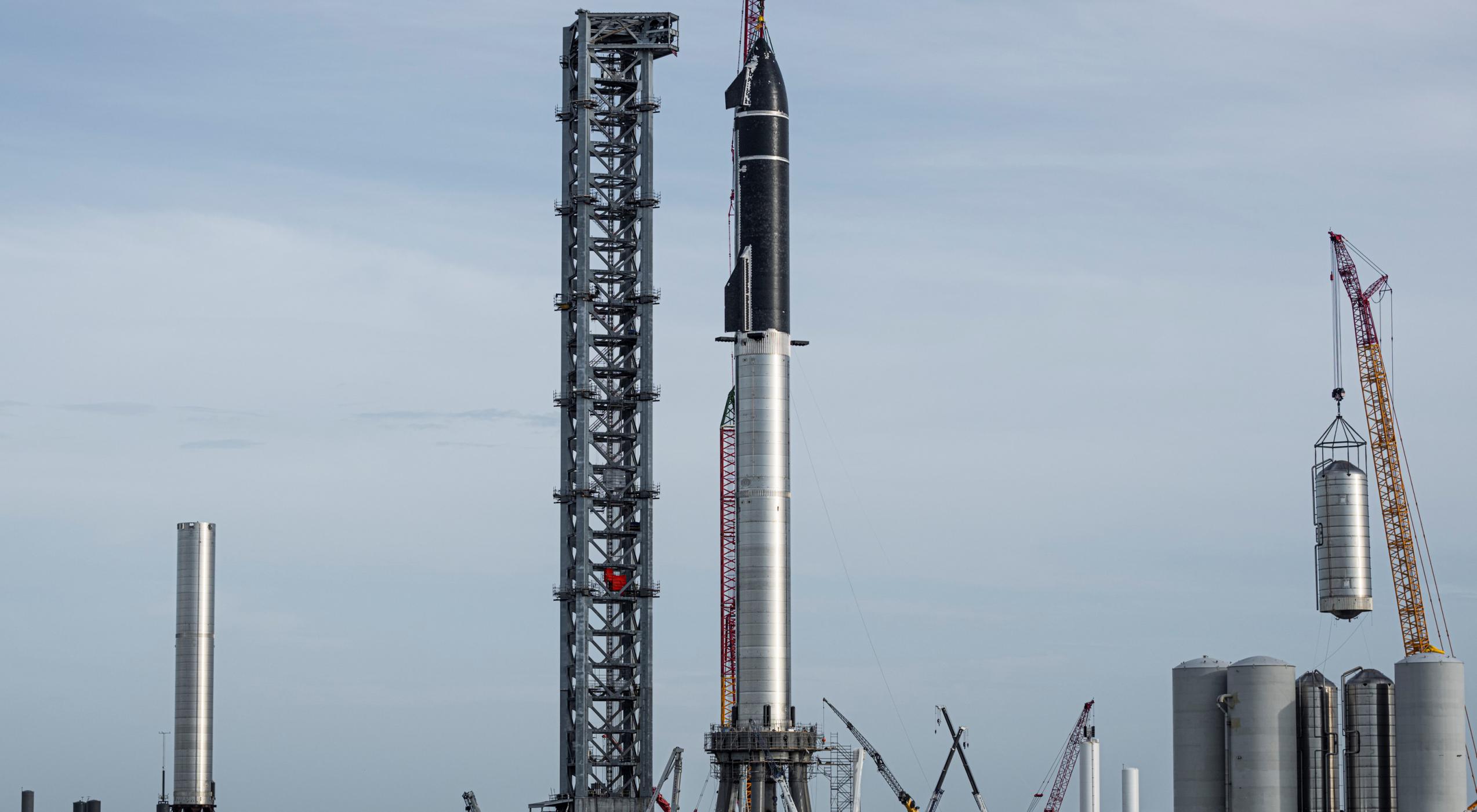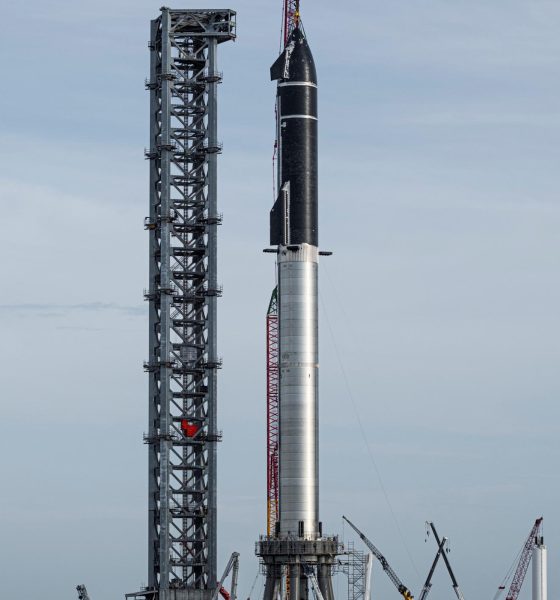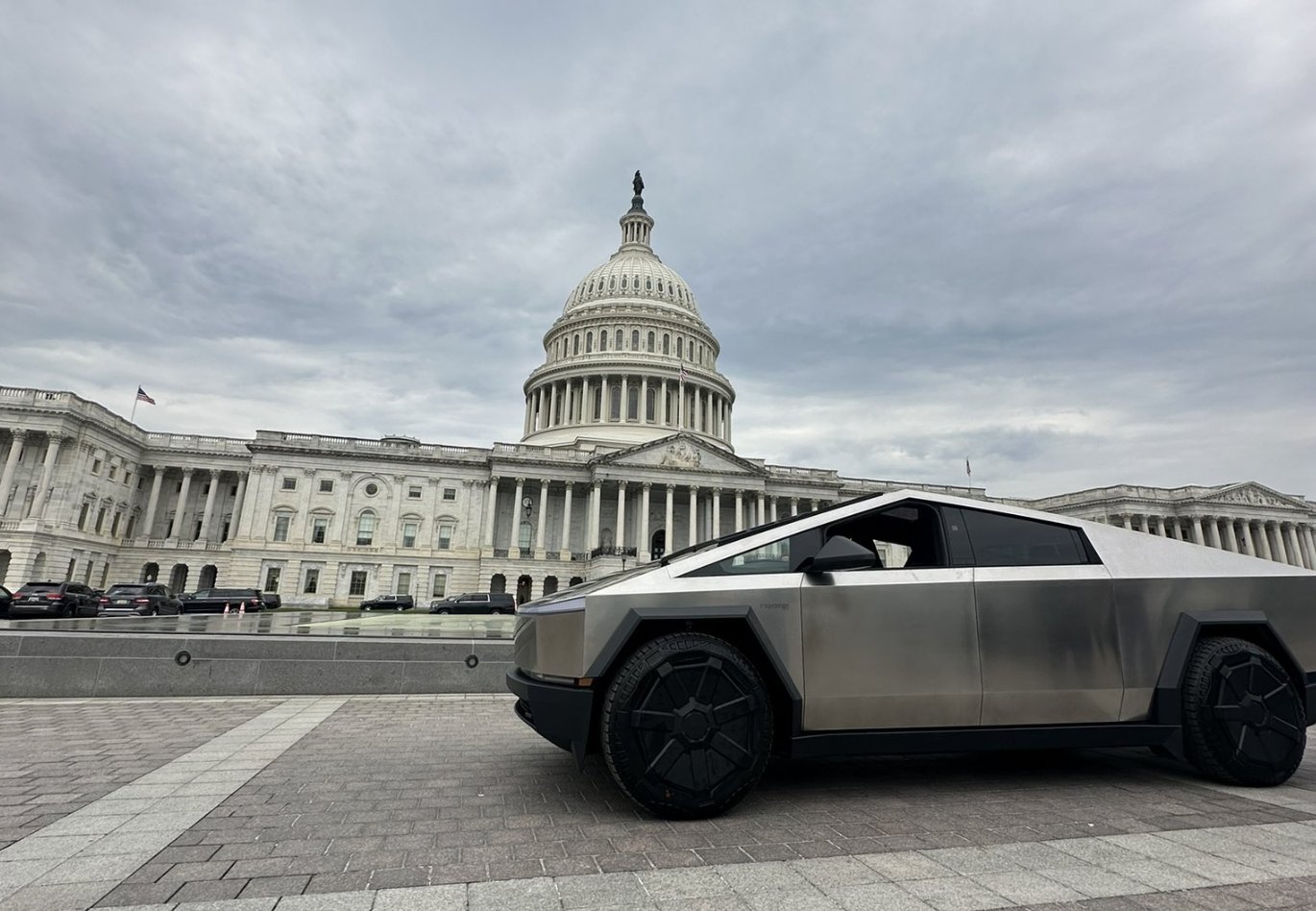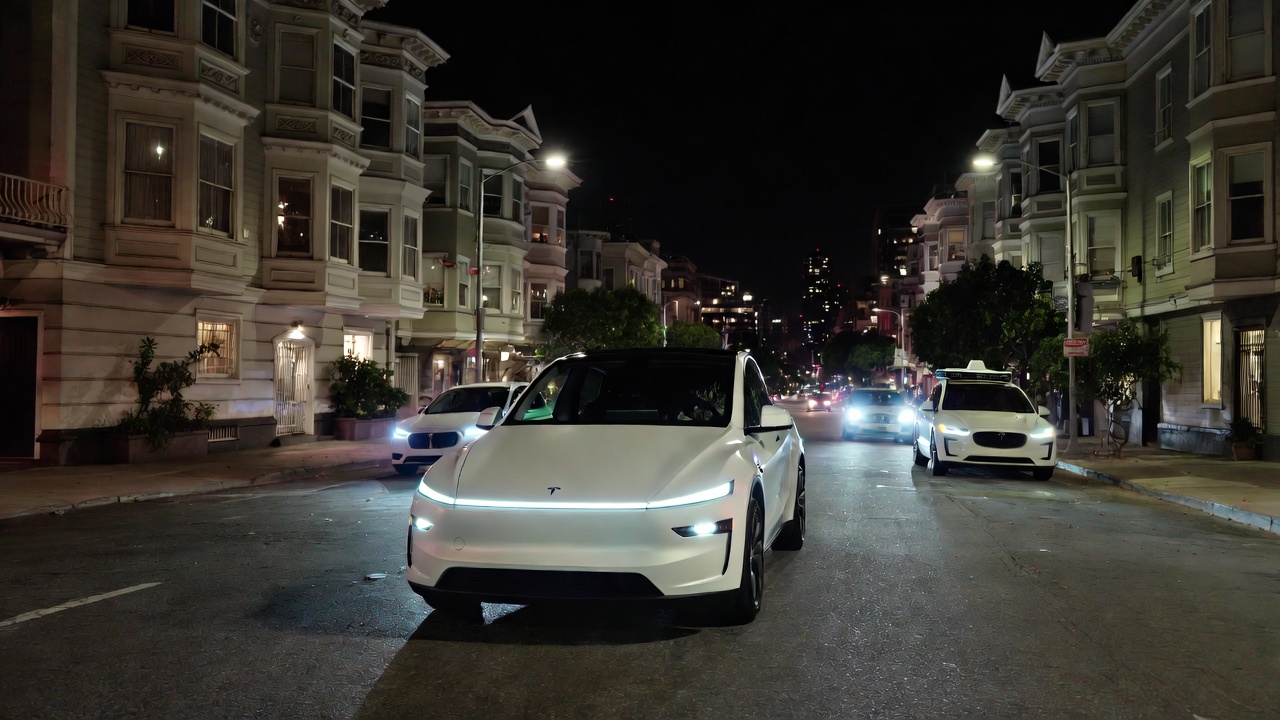

News
Elon Musk says SpaceX’s orbital Starship debut headed for FAA faceoff in a few weeks
CEO Elon Musk says that SpaceX’s first completed Starship rocket could be ready for its orbital launch debut just “a few weeks” from now – far sooner than most expected.
On August 6th, SpaceX very stacked that same vehicle – Starship 20 (S20) and Super Heavy Booster 4 (B4) – to its full height for the first time ever, briefly creating the largest rocket ever assembled. However, the feat was equally a symbolic photo opportunity. SpaceX did install an unprecedented number of Raptor engines on Booster 4 and Ship 20 in a spectacularly short timeframe and both stages are technically meant for flight, but Starship S20 was demated less than an hour later and shipped back to the factory shortly thereafter.
Though they’d had Raptors installed and been stacked to their full ~120m (~390 ft) height, neither booster or ship were truly complete and at least 20% of their engines had yet to be qualified at SpaceX’s McGregor, Texas test campus. Both needed a week or two of additional work – mostly just wiring avionics and installing secondary and tertiary plumbing. Curiously, on August 13th, Starship S20 was once again rolled to SpaceX’s Boca Chica launch site in a partial state of completion, where it now sits beside the orbital launch mount for unknown reasons.
After several days of delays, SpaceX also removed Super Heavy B4 from the orbital launch mount and returned it to the build site on August 11th, where teams are still working to finish its secondary plumbing and avionics. Like Ship 20, all of its Raptors were removed soon after its return, freeing both to complete cryogenic proof testing without risking dozens of potentially flightworthy rocket engines.
Like all previous Starship prototypes, those ‘cryo proof’ tests will involved loading Ship 20 and Booster 4 with supercool liquid nitrogen (LN2), simulating the weight and extreme thermal stress of real liquid oxygen (LOx) and methane (LCH4) propellant without the risk of a catastrophic fire or explosion in the event of anomalies.
For more than a month, SpaceX also gradually outfitted one of two suborbital launch mounts with special hydraulic rams that would have simulated the thrust of Ship 20’s three sea level and three vacuum-optimized Raptor engines – the first Starship prototype with such a configuration. The same was true for Booster 4 and SpaceX had outfitted a new test jig with nine hydraulic rams labeled “B4” – clearly meant to simulate the thrust of nine engines pushing against the Super Heavy’s thrust puck. Additionally, a far larger structural test tool unofficially nicknamed the ‘can crusher’ has been more or less finished after ~6 weeks of work, leading many to assume that Booster 4 would be the first Super Heavy to be subjected to the immense simulated thrust of 29 Raptor engines.
However, earlier this week, SpaceX completely disassembled the six hydraulic rams installed on Mount B and removed all nine rams from the apparent Booster 4 jig. Starship S20 was then rolled back to spot beside the orbital launch mount – not the suborbital mount that had been carefully prepared for its test campaign mere days prior. At the time, the only practical explanation – save for some kind of catastrophic miscommunication – was that SpaceX had cancelled clear plans to cryo proof Ship 20 and Booster 4 with simulated Raptor thrust.
Up to now, every single major design change implemented on Starship’s engine section has resulted in the first prototype – and often one or several test tanks – being subjected to cryo proof testing with a complex series of hydraulic rams used to simulate thrust. That most recently peaked with SpaceX’s lone BN2.1 Super Heavy test tank, which seemingly passed a cryo proof, pressure test, and a jig capable of simulating the thrust of up to eight Raptor engines. However, SpaceX has never tested Super Heavy’s new nine-engine thrust puck and has certainly never subjected a Super Heavy booster skirt to the combined thrust of 20 outer engines and 9 center engines.
The fact that complex custom test stands and jigs had already been assembled and installed for Ship 20 and Booster 4 before they were removed or disassembled without use strongly implies that someone at SpaceX – presumably Elon Musk himself – has either decided that those tests are unnecessary or that skipping them is worth the substantial risk. Indeed, for Musk’s subsequent August 15th claim that Ship 20 and Booster 4 could be stacked and ready for flight just “a few weeks” from now to come true, 14-21 days is simply nowhere close to enough time to cryo proof, thrust sim, and static fire both vehicles; integrate the stages; and perform the first true integrate testing of a Starship stack – possibly up to and including some combination of a full-stack cryo proof, wet dress rehearsal, or static fire.
And, as Musk himself notes, that complex ballet of first-of-their-kind rocket prototypes might not even be the long straw for Starship’s orbital launch debut. Technically, short of some kind of major legal intervention, there is actually no way for Starship to launch in the next “few weeks.” In an absolute best-case scenario, the Federal Aviation Administration (FAA) would release a draft environmental review of SpaceX’s orbital Starship launch site today, accept public comments for the required 30 days, instantly clear Starbase with environmental approval within a few days of the public comment window, and then approve Starship’s South Texas orbital launch license as soon as the necessary environmental permissions are in hand.
In other words, the best-case ETA of regulatory approvals for Starship’s first orbital test flight is arguably late September and going off of FAA precedent, that optimistic scenario is also a fairy tale. In reality, a bare minimum of 2-3 months after the FAA releases its draft environmental impact statement is a more realistic best-case scenario for SpaceX. On the opposite end, it’s possible that the FAA will decide that SpaceX needs to complete an entirely new environmental review for its Starbase launch site, easily delaying Starship’s orbital launch debut by 6-12+ months. That doesn’t even account for the potential looming challenges SpaceX might have to surmount to secure an orbital Starship launch license.
Given the challenges SpaceX had in securing even a watered-down suborbital launch license for its medium-altitude Starship flight tests, it’s not out of the question that the FAA could attach some extremely onerous limitations to that license. Ultimately, only time (and the slightest hint of actual movement or urgency at the FAA) will tell and there is arguably nothing that would better apply pressure in the right places than the largest, most powerful, most ambitious rocket ever built sitting – ready for flight – at a brand new launch pad, waiting solely on regulatory approval.

News
Tesla Diner becomes latest target of gloom and doom narrative

The Tesla Diner has been subject to many points of criticism since its launch in mid-2025, and skeptics and disbelievers claim the company’s latest novel concept is on its way down, but there’s a lot of evidence to state that is not the case.
The piece cites anecdotal evidence like empty parking lots, more staff than customers during a December visit, removed novelty items, like Optimus robot popcorn service and certain menu items, the departure of celebrity chef Eric Greenspan in November 2025, slow service, high prices, and a shift in recent Google/Yelp reviews toward disappointment.
The piece frames this as part of broader Tesla struggles, including sales figures and Elon Musk’s polarizing image, calling it a failed branding exercise rather than a sustainable restaurant.
This narrative is overstated and sensationalized, and is a good representation of coverage on Tesla by today’s media.
Novelty Fade is Normal, Not Failure
Any hyped launch, especially a unique Tesla-branded destination blending dining, Supercharging, and a drive-in theater, naturally sees initial crowds taper off after the “Instagram effect” wears down.
Tesla makes major change at Supercharger Diner amid epic demand
This is common for experiential spots in Los Angeles, especially pop-up attractions or celebrity-backed venues. The article admits early success with massive lines and social media buzz, but treats the return to normal operations as “dying down.”
In reality, this stabilization is a healthy sign of transitioning from hype-driven traffic to steady patronage.
Actual Performance Metrics Contradict “Ghost Town” Claims
- In Q4 2025, the Diner generated over $1 million in revenue, exceeding the average McDonald’s location
- It sold over 30,000 burgers and 83,000 fries in that quarter alone. These figures indicate a strong ongoing business, especially for a single-location prototype focused on enhancing Supercharger experiences rather than competing as a mass-market chain
It’s not a ghost town lol. The @Tesla Diner still had over 30,000 burger orders and 83,000 fries orders in Q4. The diner generated over $1M in revenue in Q4, a $4M annual run rate, which is more than the average McDonald’s…. pic.twitter.com/XvAGLUqxej
— Sawyer Merritt (@SawyerMerritt) January 4, 2026
Conflicting On-the-Ground Reports
While the article, and other similar pieces, describe a half-full parking lot and sparse customers during specific off-peak visits, other recent accounts push back:
- A January 2026 X post noted 50 of 80 Supercharger stalls were busy at 11 a.m., calling it “the busiest diner in Hollywood by close to an order of magnitude
TESLA DINER 🍔
Frantic!!!
Crazy busy. pic.twitter.com/wMbmr8SFFn
— Rich & Sharon (@HullTeslaModel3) January 4, 2026
- Reddit discussions around the same time describe it as not empty when locals drive by regularly, with some calling the empty narrative “disingenuous anti-Tesla slop.”
When we visited it last week it was packed. We had to wait to enter, get a table and go to the restroom. We were lucky to find a spot to charge.
— Rani G (@ranig) January 4, 2026
Bottom Line
The Tesla Diner, admittedly, is not the nonstop circus it was at launch–that was never sustainable or intended. But, it’s far from “dying” or an “empty pit stop.”
It functions as a successful prototype: boosting Supercharger usage, generating solid revenue, and serving as a branded amenity in the high-traffic EV market of Los Angeles.
News
Tesla stands to win big from potential adjustment to autonomous vehicle limitations
Enabling scale, innovation, and profitability in a sector that is growing quickly would benefit Tesla significantly, especially as it has established itself as a leader.

Tesla stands to be a big winner from a potential easing of limitations on autonomous vehicle development, as the United States government could back off from the restrictions placed on companies developing self-driving car programs.
The U.S. House Energy and Commerce subcommittee will hold a hearing later this month that will aim to accelerate the deployment of autonomous vehicles. There are several key proposals that could impact the development of self-driving cars and potentially accelerate the deployment of this technology across the country.
These key proposals include raising the NHTSA’s exemption cap from 2,500 to 90,000 vehicles per year per automaker, preempting state-level regulations on autonomous vehicle systems, and mandating NHTSA guidelines for calibrating advanced driver assistance systems (ADAS).
Congress, to this point, has been divided on AV rules, with past bills like the 2017 House-passed measure stalling in the Senate. Recent pushes come from automakers urging the Trump administration to act faster amid competition from Chinese companies.
Companies like Tesla, who launched a Robotaxi service in Austin and the Bay Area last year, and Alphabet’s Waymo are highlighted as potential beneficiaries from lighter sanctions on AV development.
The NHTSA recently pledged to adopt a quicker exemption review for autonomous vehicle companies, and supporters of self-driving tech argue this will boost U.S. innovation, while critics are concerned about safety and job risks.
How Tesla Could Benefit from the Proposed Legislation
Tesla, under CEO Elon Musk’s leadership, has positioned itself as a pioneer in autonomous driving technology with its Full Self-Driving software and ambitious Robotaxi plans, including the Cybercab, which was unveiled in late 2024.
The draft legislation under consideration by the U.S. House subcommittee could provide Tesla with significant advantages, potentially transforming its operational and financial landscape.
NHTSA Exemption Cap Increase
First, the proposed increase in the NHTSA exemption cap from 2,500 to 90,000 vehicles annually would allow Tesla to scale up development dramatically.
Currently, regulatory hurdles limit how many fully autonomous vehicles can hit the roads without exhaustive approvals. For Tesla, this means accelerating the rollout of its robotaxi fleet, which Musk envisions as a network of millions of vehicles generating recurring revenue through ride-hailing. With Tesla’s vast existing fleet of over 6 million vehicles equipped with FSD hardware, a higher cap could enable rapid conversion and deployment, turning parked cars into profit centers overnight.
Preempting State Regulations
A united Federal framework would be created if it could preempt State regulations, eliminating the patchwork of rules that currently complicate interstate operations. Tesla has faced scrutiny and restrictions in states like California, especially as it has faced harsh criticism through imposed testing limits.
A federal override of State-level rules would reduce legal battles, compliance costs, and delays, allowing Tesla to expand services nationwide more seamlessly.
This is crucial for Tesla’s growth strategy, as it operates in multiple markets and aims for a coast-to-coast Robotaxi network, competing directly with Waymo’s city-specific expansions.
Bringing Safety Standards to the Present Day
Innovation in the passenger transportation sector has continued to outpace both State and Federal-level legislation, which has caused a lag in the development of many things, most notably, self-driving technology.
Updating these outdated safety standards, especially waiving requirements for steering wheels or mirrors, directly benefits Tesla’s innovative designs. Tesla wanted to ship Cybertruck without side mirrors, but Federal regulations required the company to equip the pickup with them.
Cybercab is also planned to be released without a steering wheel or pedals, and is tailored for full autonomy, but current rules would mandate human-ready features.
Streamlined NHTSA reviews would further expedite approvals, addressing Tesla’s complaints about bureaucratic slowdowns. In a letter written in June to the Trump Administration, automakers, including Tesla, urged faster action, and this legislation could deliver it.
In Summary
This legislation represents a potential regulatory tailwind for Tesla, but it still relies on the government to put forth action to make things easier from a regulatory perspective. Enabling scale, innovation, and profitability in a sector that is growing quickly would benefit Tesla significantly, especially as it has established itself as a leader.
News
Nvidia CEO Jensen Huang explains difference between Tesla FSD and Alpamayo
“Tesla’s FSD stack is completely world-class,” the Nvidia CEO said.

NVIDIA CEO Jensen Huang has offered high praise for Tesla’s Full Self-Driving (FSD) system during a Q&A at CES 2026, calling it “world-class” and “state-of-the-art” in design, training, and performance.
More importantly, he also shared some insights about the key differences between FSD and Nvidia’s recently announced Alpamayo system.
Jensen Huang’s praise for Tesla FSD
Nvidia made headlines at CES following its announcement of Alpamayo, which uses artificial intelligence to accelerate the development of autonomous driving solutions. Due to its focus on AI, many started speculating that Alpamayo would be a direct rival to FSD. This was somewhat addressed by Elon Musk, who predicted that “they will find that it’s easy to get to 99% and then super hard to solve the long tail of the distribution.”
During his Q&A, Nvidia CEO Jensen Huang was asked about the difference between FSD and Alpamayo. His response was extensive:
“Tesla’s FSD stack is completely world-class. They’ve been working on it for quite some time. It’s world-class not only in the number of miles it’s accumulated, but in the way it’s designed, the way they do training, data collection, curation, synthetic data generation, and all of their simulation technologies.
“Of course, the latest generation is end-to-end Full Self-Driving—meaning it’s one large model trained end to end. And so… Elon’s AD system is, in every way, 100% state-of-the-art. I’m really quite impressed by the technology. I have it, and I drive it in our house, and it works incredibly well,” the Nvidia CEO said.
Nvidia’s platform approach vs Tesla’s integration
Huang also stated that Nvidia’s Alpamayo system was built around a fundamentally different philosophy from Tesla’s. Rather than developing self-driving cars itself, Nvidia supplies the full autonomous technology stack for other companies to use.
“Nvidia doesn’t build self-driving cars. We build the full stack so others can,” Huang said, explaining that Nvidia provides separate systems for training, simulation, and in-vehicle computing, all supported by shared software.
He added that customers can adopt as much or as little of the platform as they need, noting that Nvidia works across the industry, including with Tesla on training systems and companies like Waymo, XPeng, and Nuro on vehicle computing.
“So our system is really quite pervasive because we’re a technology platform provider. That’s the primary difference. There’s no question in our mind that, of the billion cars on the road today, in another 10 years’ time, hundreds of millions of them will have great autonomous capability. This is likely one of the largest, fastest-growing technology industries over the next decade.”
He also emphasized Nvidia’s open approach, saying the company open-sources its models and helps partners train their own systems. “We’re not a self-driving car company. We’re enabling the autonomous industry,” Huang said.








